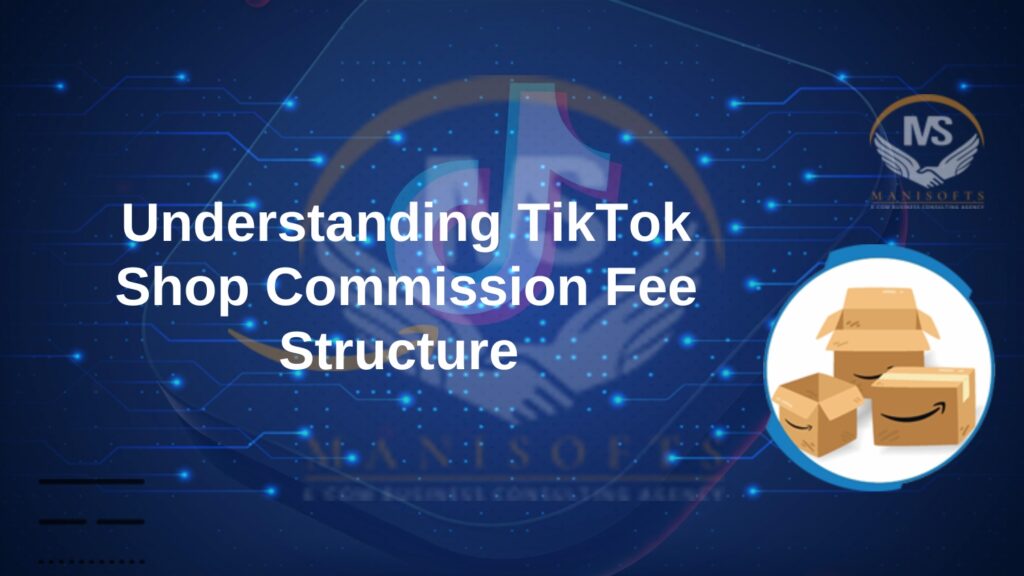Discover the details of TikTok Shop commission fees. Learn how these fees impact your sales and how to maximize your profits on the platform. Stay informed and make the most of your TikTok Shop experience!
Introduction
TikTok charges the ‘TikTok Shop Commission Fee’ to sellers when they sell on the TikTok Shop platform. With TikTok changing from a simple social media app into a flourishing e-commerce field, it has rolled out this feature to directly let companies and influencers sell their items to a broad demographic. TikTok deducts a percentage from every sale as its commission fee to uphold the platform and ensure transactions proceed smoothly. Sellers striving to maximize profits and plan pricing must understand these fees. The fee structure is an important part of selling on TikTok. Therefore, businesses must understand this before they enter the platform’s busy marketplace.
TikTok Shop Commission Fee
The TikTok Shop Commission Fee is the percentage that TikTok charges sellers whenever they make a sale through the TikTok Shop platform. As the app grows as a popular e-commerce platform, this fee plays a crucial role in maintaining and operating the marketplace for sellers and buyers alike. Understanding the commission fee structure is essential for sellers looking to maximize their earnings while engaging with the millions of potential customers on TikTok.
By offering a seamless shopping experience directly within the app, TikTok has created an opportunity for businesses, influencers, and creators to monetize their presence effectively. However, to benefit from this platform, sellers must know the commission fees associated with each sale, which can impact their profit margins.
How Does the TikTok Shop Commission Fee Work?
TikTok charges sellers a commission fee based on the product category they sell. This fee is automatically deducted from the total sale amount before the seller receives their earnings. Sellers need to factor this fee into their pricing strategy to ensure they profit after the commission is deducted.
TikTok Shop Commission Fee Table
Here’s a breakdown of the typical commission fees for different product categories on TikTok Shop:
| Cluster | Category | Subcategory | Commission fee rate before the 15th of August, 2024, 00:00 Philippine time (GMT+8) (VAT inclusive) | Commission fee rate starting the 15th of August, 2024, 00:00 Philippine time (GMT+8) (VAT inclusive) |
| 1. Fashion | Fashion Accessories | 4.9% | 6.4% | |
| Jewellery Accessories & Derivatives | 4.7% | 6.3% | ||
| Luggage & Bags | 4.8% | 6.3% | ||
| Shoes | 4.7% | 6.2% | ||
| Sports & Outdoor | 4.6% | 6.2% | ||
| Womenswear & Underwear | 5.2% | 6.7% | ||
| Menswear & Underwear | 5.2% | 6.7% | ||
| Muslim Fashion | 5.2% | 6.7% | ||
| Pre-Owned | 4.3% | 5.0% | ||
| 2. FMCG | Baby & Maternity | Baby Clothing & Shoes | 4.3% | 5.9% |
| Baby & Maternity | Baby Safety | 4.3% | 6.4% | |
| Baby & Maternity | Nursing & Feeding | 4.1% | 5.9% | |
| Baby & Maternity | Baby Toys | 4.3% | 6.1% | |
| Baby & Maternity | Baby Care & Health | 4.3% | 5.9% | |
| Baby & Maternity | Maternity Supplies | 4.0% | 6.2% | |
| Baby & Maternity | Baby Travel Essentials | 4.3% | 6.4% | |
| Baby & Maternity | Baby Furniture | 4.3% | 5.9% | |
| Baby & Maternity | Baby Fashion Accessories | 4.1% | 6.3% | |
| Baby & Maternity | Formula Milk & Baby Food | 3.0% | 4.5% | |
| Beauty & Personal Care | 4.8% | 6.4% | ||
| Food & Beverages | 3.0% | 4.5% | ||
| Health | 4.5% | 6.0% | ||
| Kids’ Fashion | 4.1% | 5.9% | ||
| 3. Electronics | Computers & Office Equipment | Data Storage & Software | 4.0% | 5.3% |
| Computers & Office Equipment | Office Equipment | 4.0% | 5.3% | |
| Computers & Office Equipment | Peripherals & Accessories | 4.0% | 5.3% | |
| Computers & Office Equipment | Desktop & Laptop Components | 4.0% | 5.3% | |
| Computers & Office Equipment | Network Components | 4.0% | 5.3% | |
| Computers & Office Equipment | Desktop Computers, Laptops & Tablets | 4.0% | 5.3% | |
| Household Appliances | Kitchen Appliances | 5.0% | 6.8% | |
| Household Appliances | Commercial Appliances | 4.1% | 6.1% | |
| Household Appliances | Home Appliances | 4.5% | 6.8% | |
| Household Appliances | Large Home Appliances | 4.0% | 5.3% | |
| Phones & Electronics | Phones & Tablets | 2.0% | 3.2% | |
| Phones & Electronics | Phone Accessories | 3.8% | 5.8% | |
| Phones & Electronics | Education Devices | 3.5% | 4.8% | |
| Phones & Electronics | Universal Accessories | 3.8% | 5.0% | |
| Phones & Electronics | Tablet & Computer Accessories | 4.0% | 5.4% | |
| Phones & Electronics | Audio & Video | 4.6% | 6.6% | |
| Phones & Electronics | Smart & Wearable Devices | 3.6% | 5.8% | |
| Phones & Electronics | Cameras & Photography | 3.6% | 5.8% | |
| Phones & Electronics | Gaming & Consoles | 4.5% | 6.3% | |
| 4. Lifestyle | Books, Magazines & Audio | 4.7% | 6.6% | |
| Collectibles | 4.7% | 6.6% | ||
| Furniture | 5.1% | 5.8% | ||
| Home Improvement | 5.1% | 5.8% | ||
| Home Supplies | 4.8% | 5.8% | ||
| Kitchenware | 5.1% | 6.4% | ||
| Computers & Office Equipment | Office Stationery & Supplies | 5.1% | 6.9% | |
| Pet Supplies | 4.9% | 6.0% | ||
| Textiles & Soft Furnishings | 5.1% | 6.9% | ||
| Tools & Hardware | 5.0% | 6.9% | ||
| Toys & Hobbies | Dolls & Stuffed Toys | 4.6% | 6.1% | |
| Toys & Hobbies | Sports & Outdoor Play | 4.6% | 6.1% | |
| Toys & Hobbies | Musical Instruments & Accessories | 4.7% | 6.8% | |
| Toys & Hobbies | DIY | 4.6% | 6.1% | |
| Toys & Hobbies | Games & Puzzles | 4.6% | 6.1% | |
| Toys & Hobbies | Educational Toys | 4.6% | 6.1% | |
| Toys & Hobbies | Electric & Remote Control Toys | 4.6% | 6.1% | |
| Toys & Hobbies | Classic & Novelty Toys | 4.6% | 6.1% | |
| Automotive & Motorcycle | Auto Replacement Parts | 4.0% | 5.8% | |
| Automotive & Motorcycle | Motorcycle Accessories | 4.5% | 6.8% | |
| Automotive & Motorcycle | Motorcycle Parts | 4.5% | 6.8% | |
| Automotive & Motorcycle | Car Washing & Maintenance | 4.3% | 6.0% | |
| Automotive & Motorcycle | Quads, Motorhomes & Boats | 4.3% | 6.0% | |
| Automotive & Motorcycle | Car Lights | 4.0% | 5.8% | |
| Automotive & Motorcycle | Car Repair Tools | 4.3% | 6.0% | |
| Automotive & Motorcycle | Car Electronics | 4.0% | 5.8% | |
| Automotive & Motorcycle | Car Exterior Accessories | 4.3% | 6.0% | |
| Automotive & Motorcycle | Car Interior Accessories | 4.0% | 5.8% | |
| Pre-Owned | 4.3% | 5.0% | ||
Factors Affecting Commission Fees
Commission fees significantly determine how much profit sellers, freelancers, and service providers can retain from their sales or earnings. These fees, often charged by e-commerce platforms, agencies, or payment gateways, vary widely depending on several factors. Understanding these factors is crucial for anyone looking to maximize their earnings and minimize costs. Here’s a closer look at the key factors affecting commission fees:

1. Type of Product or Service
The nature of the product or service being sold often influences the commission fee. For instance, luxury items, electronics, and jewellery might attract higher fees than everyday products like clothing or kitchenware. High-value items usually involve more risk or require additional security measures.
2. Industry or Market
Different industries have varying standard commission rates. For example, real estate agents often charge higher commission rates (typically around 5-6%) than online marketplaces for digital products, which might only charge around 1-3%. The level of competition and market dynamics in each industry greatly impact these rates.
3. Platform Policies
Each platform has its commission fee structure, which may be influenced by factors like its popularity, user base, or level of services it offers. For instance, e-commerce giants like Amazon and eBay may charge commission rates that are different from those of newer or niche platforms.
4. Sales Volume
High sales volumes can sometimes lead to lower commission rates. Many platforms offer tiered commission structures, where sellers with higher sales volumes enjoy reduced fees. This incentivizes sellers to drive more sales through the platform.
5. Transaction Size or Value
The value of each transaction can also impact the commission fee. For example, platforms may charge a flat fee for smaller transactions but apply a percentage-based fee for higher-value transactions. This helps ensure the fee remains fair for low-value and high-value sales.
6. Payment Method
The payment method can influence the commission fee, as different payment gateways (e.g., PayPal, credit cards, bank transfers) charge varying processing fees. These charges are often passed on to the seller, affecting the overall commission rate.
7. Location and Currency Conversion
International sales can attract additional fees due to currency conversion costs or cross-border transaction charges. If you sell to customers in different countries, expect commission fees to vary based on exchange rates and international banking fees.
8. Promotional or Discount Campaigns
Sellers participating in platform-wide promotions or discount campaigns might be subject to adjusted commission fees. While these campaigns can drive more sales, they can temporarily alter the commission structure, reducing the seller’s profit margin.
9. Subscription or Membership Status
Some platforms offer subscription or membership plans that reduce commission fees for paying members. For example, a premium seller account might enjoy lower fees than a basic account, providing cost savings for frequent sellers.
10. Contract or Agreement Terms
For service providers, freelancers, or those working with agencies, their contract or agreement terms can directly influence commission fees. Negotiating favourable terms at the outset can significantly impact how much of their earnings are retained.
How Commission Fees Are Calculated?
Commission fees are crucial to any transaction involving a third-party platform, service provider, or agency. These fees represent a percentage or fixed amount charged on the total sale, serving as compensation for the services provided by the platform or intermediary. Understanding how commission fees are calculated is essential for sellers, freelancers, and service providers, as it directly impacts their earnings. Here’s a detailed breakdown of how commission fees are typically calculated:
1. Percentage-Based Calculation
The most common way to calculate commission fees is through a percentage of the total sale amount. This method involves multiplying the total sale value by the commission rate.
Formula:
Commission Fee = (Total Sale Amount) × (Commission Rate)
Example:
If a seller makes a sale of $500 and the commission rate is 10%, the fee would be $500 × 10% = $50
In this case, the seller would pay $50 as a commission fee, and their net earnings would be $450.
2. Fixed Fee Calculation
Some platforms or agencies charge a fixed commission fee regardless of the transaction size. This fee remains constant, making it easy to predict costs.
Example:
If a platform charges a fixed fee of $5 per transaction, the seller will pay $5 whether they sell a product worth $50 or $500.
3. Tiered Commission Structure
Many platforms use a tiered commission structure, where the commission rate decreases as the total sales volume increases. This model encourages sellers to make more sales and rewards them with lower fees.
Example:
| Monthly Sales Volume | Commission Rate |
| $0 – $1,000 | 10% |
| $1,001 – $5,000 | 8% |
| $5,001+ | 5% |
If a seller makes $6,000 in sales in a month, they will pay 10% on the first $1,000, 8% on the next $4,000, and 5% on the remaining $1,000.
4. Sliding Scale Commission
In some cases, commission fees decrease as the value of each sale increases. This sliding scale approach benefits sellers dealing with high-value transactions.
Example:
A platform might charge a 15% commission for sales under $100, 10% for sales between $100 and $500, and 5% for sales over $500.
5. Commission Plus Additional Fees
Some platforms may charge a commission fee and other service charges, such as payment processing fees, listing fees, or advertising costs. In this case, the total fee calculation involves adding these additional costs to the commission.
Example:
If a platform charges a 10% commission plus a $2 processing fee per sale, for a sale worth $200, the total fee would be: ($200 × 10%) + $2 = $20 + $2 = $22
6. Currency Conversion and Cross-Border Fees
For international transactions, commission fees may include currency conversion charges or cross-border fees. These additional costs can impact the total commission, making it essential for sellers to factor them in when selling to customers in different countries.
Tips for Sellers to Manage Commission Fees
- Know Your Platform’s Fee Structure: Before selling, always understand the platform’s fee structure to avoid unexpected costs.
- Incorporate Fees into Pricing: Factor in commission fees when setting product prices to maintain a profitable margin.
- Monitor Sales Data: Regularly track your sales and commission fees to identify cost savings or adjustment opportunities.
By understanding how commission fees are calculated, sellers and service providers can make informed decisions, set the right pricing, and optimize their earnings, ensuring they achieve the best possible returns on their sales efforts.
FAQ’s
In soSometimeslers can reduce their commission fees by reaching certain sales volumes or participating in TikTok’s promotional campaigns. Additionally, some sellers with higher sales might qualify for lower rates through tiered commission structures.
The commission fee is automatically deducted from your earnings when a sale is made. The remaining amount is then credited to your TikTok Shop account balance.
TikTok typically adjusts the commission fee if a sale is cancelled or a refund is issued. However, policies may vary, so reviewing TikTok’s terms regarding cancellations and refunds is best.
No, the commission fee is usually applied only to the product’s sale price, not the shipping costs. However, be sure to double-check TikTok’s fee structure for any exceptions.
You can find detailed information about the commission fees on the TikTok Shop Seller Center, accessible through the TikTok app or by visiting the official TikTok Shop website (if available in your region).
Conclusion
The TikTok Shop Commission Fee is vital for sellers looking to thrive on the platform. While these fees may seem like a hurdle, they also provide access to a vast, engaged audience eager to discover new products. By fully understanding how these fees work and how they can impact pricing and profit margins, sellers can make informed decisions that enhance their overall strategy. As TikTok continues to expand its e-commerce capabilities, being aware of commission structures and potential changes will enable businesses to navigate this exciting marketplace successfully. Ultimately, a clear grasp of the commission fees can help sellers optimize their offerings and maximize their success on TikTok Shop.




